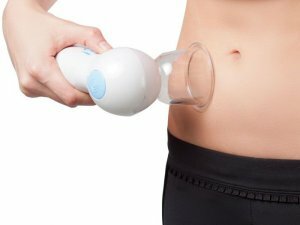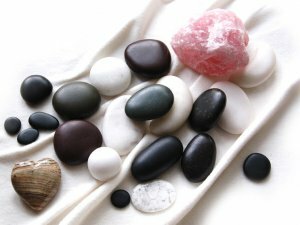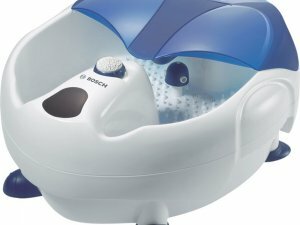Kinesio teip
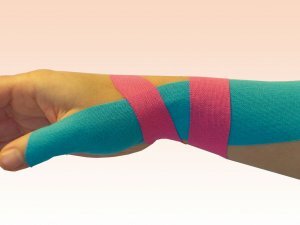 Kinesiotherapy is an innovative method. Developed in Japan in the 70s of last century. Tape is a special three-layer tape made from 100% cotton and covered with a special wavy layer of hypoallergenic glue on the acrylic base, instantly activated after the teip is placed on the problem site. In addition, polyester impregnations are applied to it for maximum possible stretching of the tape and strength.
Kinesiotherapy is an innovative method. Developed in Japan in the 70s of last century. Tape is a special three-layer tape made from 100% cotton and covered with a special wavy layer of hypoallergenic glue on the acrylic base, instantly activated after the teip is placed on the problem site. In addition, polyester impregnations are applied to it for maximum possible stretching of the tape and strength.
The elasticity of the teip is as close as possible to the elasticity of people's skin. Its properties are such that the person teip almost does not feel, and the freedom of movement is completely unlimited. It can be used around the clock for a week.
Tapes are used to relieve pain with bruises, dislocations, swelling, sprains, as well as for the treatment of arthritis and osteochondrosis. The kinesiotherapy method has been recognized in sports medicine, traumatology, manual therapy, rheumatology, pediatrics and cosmetology.
Types of tees
- Inelastic teip. This is a classic option. Usually white or cream color. Designed for wrists and ankles.
- Elastic teyp. Elasticity, which is endowed with a patch, allows to increase the surface area and degree of fixation.
- Kinesiot-tip. It is endowed with a special shape and is designed for certain parts of the body.
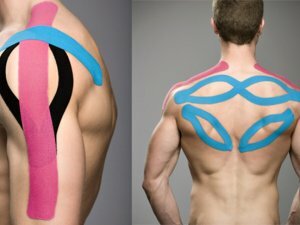 The most highly effective and innovative type of firming adhesive is kinesio tape tape. This is the most popular version of the teips.
The most highly effective and innovative type of firming adhesive is kinesio tape tape. This is the most popular version of the teips.
Advantages of
Kinesio-tip is able to:
- reduce pain;
- improving the circulation of lymph and blood;
- adjust the motion;
- unload the muscles;
- perform skin massage while moving.
When using teip muscles do not remain in a state of tension, they relax in a timely manner. The muscles do not stagnate, circulates normally. They are always maintained in working order.
How does the pipe work?
Anesthetic and therapeutic effects are achieved by improving the movement of lymph and blood circulation in the area of trauma. Tape raises the skin, facilitating blood circulation and reducing blood pressure. As a result, the muscles relax easily.
In addition, teip stretches the skin in combination with the natural movements of the body and it massages. This improves the flow of lymph, which significantly reduces muscle pain.
Rules for overlaying teip
 You have to prepare skin for teip application. It must be clean and dry. Tape is applied to the problem area. Muscles should be in a stretched state.
You have to prepare skin for teip application. It must be clean and dry. Tape is applied to the problem area. Muscles should be in a stretched state.
Instructions for use:
- Cut the teip with the required length and shape.
- Remove the protective film.
- The edges of the teip should be rounded( for better fixation).
- Slightly stretching the skin, apply a patch along the entire length.
- The first 5 cm of teip and last distribute over the skin without stretching.
- After applying teip, its surface should be grinded by hand to activate the adhesive layer.
Rules for the removal of teip
Before removal, the patch should not be wetted. This will lead to reddening of the skin, and also on the skin will remain particles of the adhesive layer.
It is necessary to impregnate the teip surface over its entire length with a spray or a special liquid for removing teips. Wait a few minutes and gently remove the teip without sudden movements. These products perfectly deactivate the adhesive layer, prevent irritation and moisturize the skin.
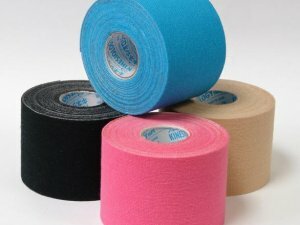 If there is no remedy for removing teip, then it should be removed in the direction of hair growth at a slight angle. After removing the teip, the skin must be moistened.
If there is no remedy for removing teip, then it should be removed in the direction of hair growth at a slight angle. After removing the teip, the skin must be moistened.
Indications for use
Tapes have quite a wide range of applications:
- stretching and bruising;
- tears and dislocations;
- inflammation of the joints, muscles and tendons;
- swelling and bruising;
- joint and muscle pain;
- injury, violation of posture, scoliosis;
- hernia of the spine, children's torticollis;
- osteochondrosis of the spine, arthrosis;
- scar change of the skin;
- menstrual and headaches;
- in the complex treatment of the musculoskeletal system.
Contraindications
Contraindications for the use of teip are:
- allergy of the body to acrylic;
- individual intolerance;
- any skin diseases incl. Oncological;
- trophic ulcers and open wounds;
- pregnancy in the first trimester;
- old age, weak and sensitive skin;
- deep vein thrombosis of the legs;
- susceptibility to the formation of bruises, microtraumas, blisters, bruises.
How to determine the quality of kinesio-teip?
When buying a teipe, you need to pay attention to the following requirements:
- The roll must be unrolled smoothly to the very end. Tensions and jerks do not need.
- Part of the tape should be torn off the roll.
- The skin is glued at once and very easily. When moving, air creases are not formed.
- In case of moisture, it does not come off.
Errors when teip is applied
In the case of a very tightly attached teip, blood circulation is disrupted, nervous sensitivity is weakened, and unpleasant sensations arise. The bandage becomes unusable and should be replaced if some segments are weakly applied, while others are tight. If the application of the plaster muscles are strained, then the tension of the tape will be weak.
Tips for using the
- chip Kinesio-teip is water resistant. It will not exfoliate when swimming or showering. But for those who are engaged in water sports and with intensive training loads it is desirable to use kinesiot-teips with an enhanced layer of glue.
- After water training and showering, teip should be slightly damped with a dry cloth, but do not rub.
- If the ends become unstuck, then they must be cut off or another application applied.
- Before training, teip is applied in at least 30 minutes.
If kinezio-teip is applied for the first time, it is desirable to involve a specialist for this.

